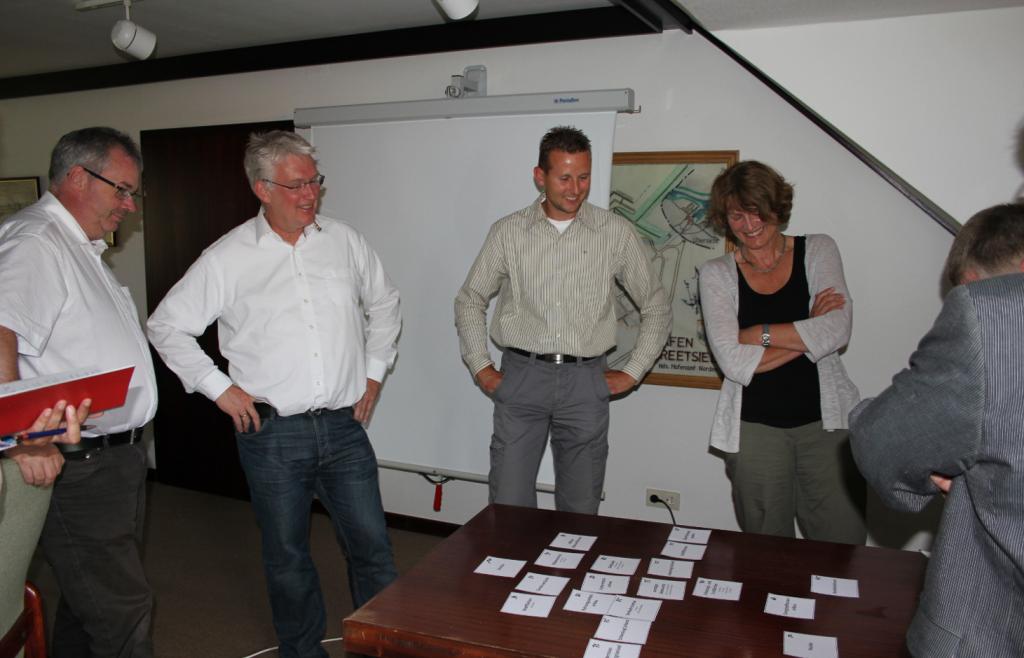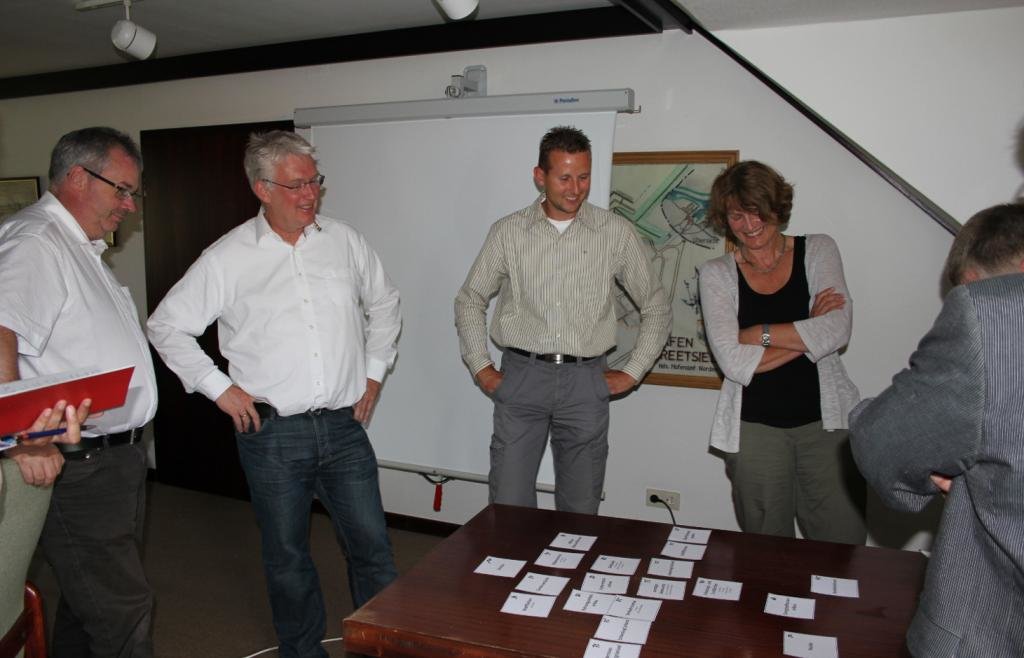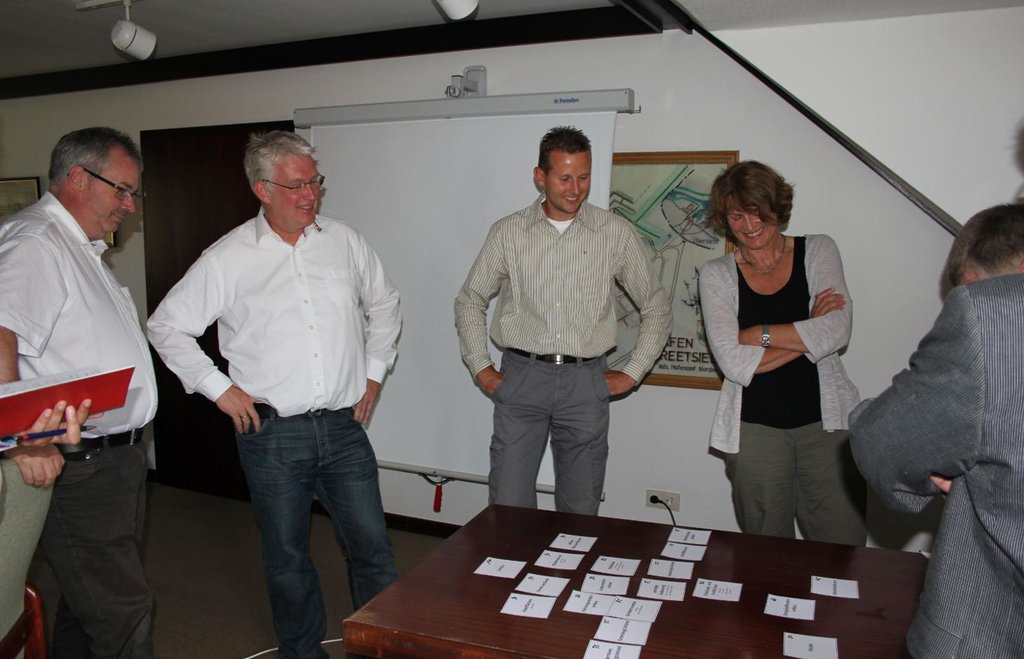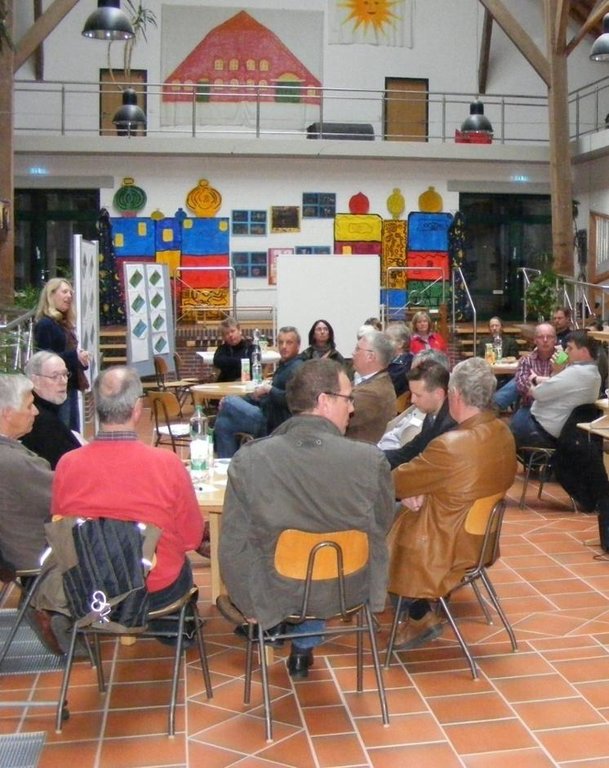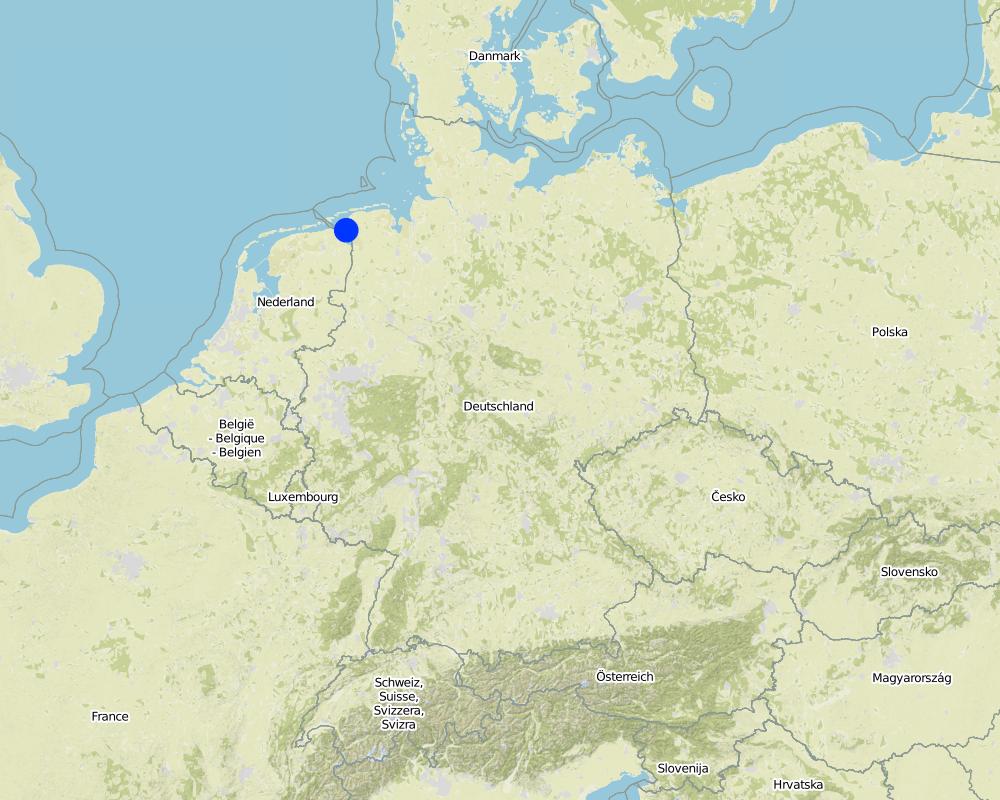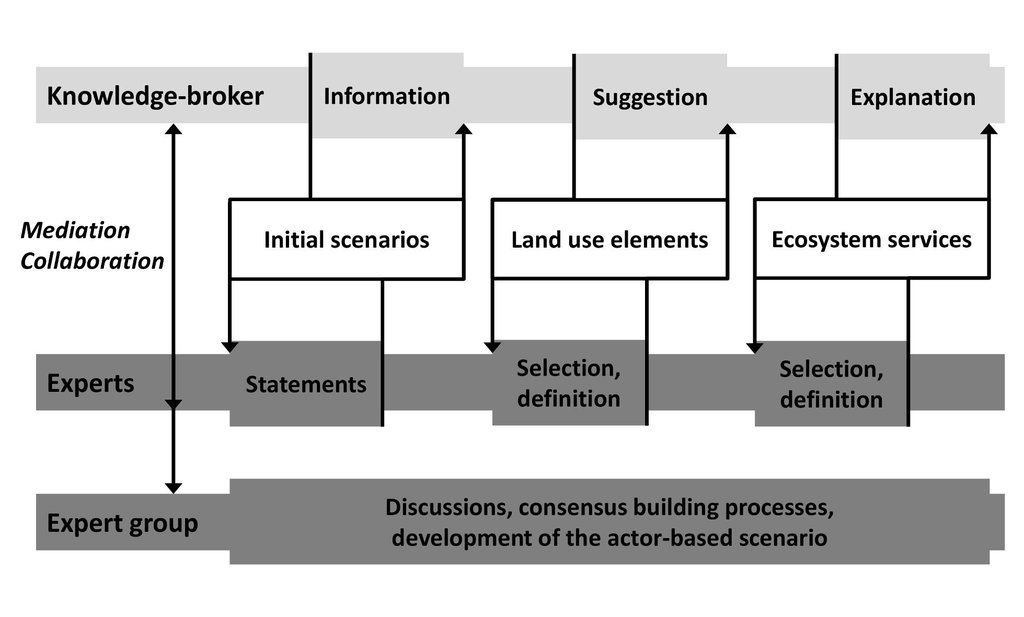Stakeholder participation in integrated assessment and planning of vulnerable coastal regions [Germany]
- Creation:
- Update:
- Compiler: Martin Maier
- Editor: –
- Reviewers: Fabian Ottiger, Deborah Niggli
Stakeholder Partizipation und integrative Entscheidungshilfen für gefährdete Küstenregionen (deutsch)
approaches_2597 - Germany
View sections
Expand all Collapse all1. General information
1.2 Contact details of resource persons and institutions involved in the assessment and documentation of the Approach
SLM specialist:
Karrasch Lena
leena.karrasch@uni-oldenburg.de
University of Oldenburg
D-26111, Oldenburg
Germany
Name of project which facilitated the documentation/ evaluation of the Approach (if relevant)
Sustainable Coastal Land Management (COMTESS / GLUES)Name of project which facilitated the documentation/ evaluation of the Approach (if relevant)
Book project: Making sense of research for sustainable land management (GLUES)Name of the institution(s) which facilitated the documentation/ evaluation of the Approach (if relevant)
University of Oldenburg (University of Oldenburg) - Germany1.3 Conditions regarding the use of data documented through WOCAT
When were the data compiled (in the field)?
10/03/2015
The compiler and key resource person(s) accept the conditions regarding the use of data documented through WOCAT:
Ja
1.4 Reference(s) to Questionnaire(s) on SLM Technologies
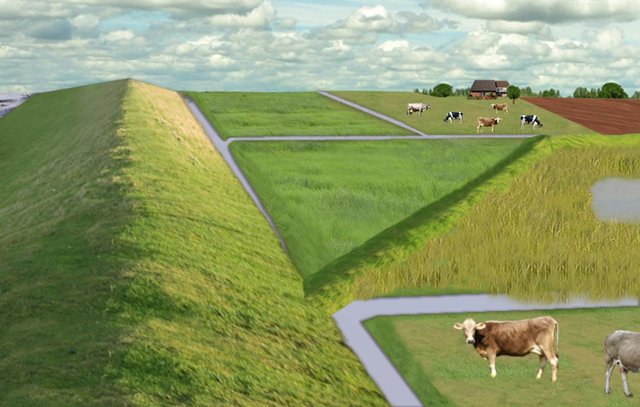
Water retention polders to improve water management [Germany]
Water retaining polders to reduce flood risk due to heavy rainfall or runoff at high tide in embanked coastal lowlands. Delineation of the retention area and land use within the retention area was developed in a participatory process with local experts.
- Compiler: Martin Maier
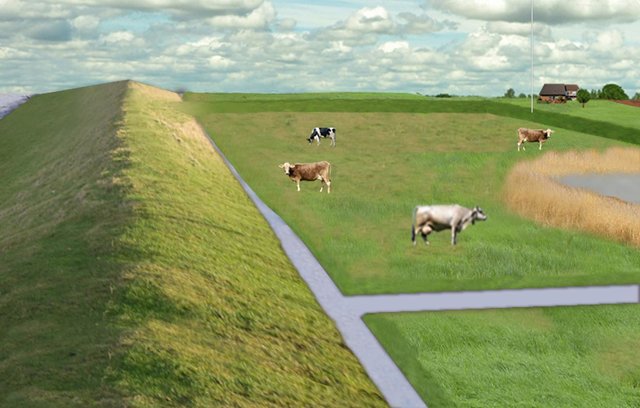
Water retention polders with adapted land use (North … [Germany]
Water retaining polders to reduce flood risk from heavy rainfall or runoff at high tide in coastal lowlands. Alternative production systems will be viable within thesepolders.
- Compiler: Martin Maier
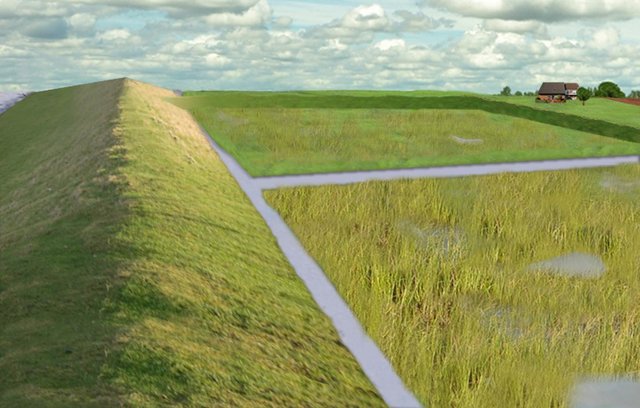
Water retention polders without agriculture to improve water … [Germany]
Water retention polders to reduce flood risk due to heavy rainfall or runoff at high tide in coastal lowlands. The retention polders are used to accumulate organic material for climate change mitigation and enable development of undisturbed natural habitats, rather than for agriculture.
- Compiler: Martin Maier
2. Description of the SLM Approach
2.1 Short description of the Approach
Stakeholders have been involved in integrated assessment to develop action-oriented land use options addressing possible climate change adaptation measures as alternatives to traditional coastal protection strategies.
2.2 Detailed description of the Approach
Detailed description of the Approach:
Aims / objectives: The SLM approach described here comprises knowledge transfer between the scientific community and practitioners through a “stakeholder-scientist partnership”. The exchange of individual positions, interests and needs concerning spatial planning activities and sustainable land use management was very important. This was also true for the investigation of relationships and interactions between the different stakeholders. Furthermore, a stakeholder-based definition of land use elements and ecosystem services enabled the stakeholders to work with scientific concepts. Land use elements are delineated spatial areas related to one specific use of land, such as arable fields, infrastructure or aquatic areas. Ecosystem services, by definition the benefits people obtain from ecosystems, include provisioning, regulation, cultural and supporting services. The assessment of stakeholder preferences concerning each land use element and ecosystem service allowed an evaluation by scientists and researchers. All suggestions made by the stakeholders are included in the project results.
Methods: In total, there were 38 qualitative interviews carried out about the stakeholders opinion concerning sustainable and adaptive land use management (with one representative from each sector), 14 quantitative interviews to determine the relationship between land use elements and ecosystem services, several telephone and email conversations, 7 focus groups (interviews with more than one representative of each sector), and 4 regional forums (attended by representatives of all sectors). Each participatory process addressed a specific issue, such as determining preferences, relationships or scenario development. These plenaries provided a platform for stakeholder discussions, group assessments and consensus-building processes on the different issues. The focus groups were built to discuss sector-specific issues in greater depth and to support the joint decision-making process. All the results were triangulated and validated.
Role of stakeholders: A heterogeneous expert group including all relevant actors (incl. land users) in the case study region was convened. Fourteen local and regional stakeholders acted as representatives of the various sectors: water management, nature conservation, agriculture, regional and local governmental bodies, and tourism. They covered all relevant fields and levels (from administrative to policy) of decision-making in the community of Krummhörn. The role of the researcher during the participatory governance process is characterised as the “knowledge-broker”. The knowledge-broker acted at the interface between research and the stakeholders. The tasks were to provide the context (land use) and detailed information (ecosystem services) and determine decision-alternatives (land management scenarios) enabling and clarifying the freedom of choice. Additionally, the knowledge-broker translated research results to facilitate the dialogue between the different sectors and strengthen collaboration.
2.3 Photos of the Approach
2.5 Country/ region/ locations where the Approach has been applied
Country:
Germany
Region/ State/ Province:
Germany, Lower Saxony
Further specification of location:
County of Aurich, community of Krummhörn
Map
×2.6 Dates of initiation and termination of the Approach
Indicate year of initiation:
2011
Year of termination (if Approach is no longer applied):
2015
2.7 Type of Approach
- project/ programme based
2.8 Main aims/ objectives of the Approach
The Approach focused mainly on other activities than SLM (Disaster risk reduction, stakeholder engagement)
The aim of the approach is to foster a more sustainable and adaptive future land use management process by including social, ecological and economic impacts of possible developments in the decision-making processes.
The SLM Approach addressed the following problems: Coastal zones with their natural and societal sub-systems are exposed to rapid changes and pressures on resources. Scarcity of space and impacts of climate change are dominant drivers of land use and adaptation management today. The population of vulnerable coastal regions has to deal with these complex problems, and to develop suitable options for land use and adaptation management considering socio-economic and environmental changes and their impacts on the land management, and vice-versa the impact of land management on the socio-economy and the environment. Future land use management needs to focus on the interactions of the entire human-nature system, aiming at more sustainable development while focusing on the benefits that ecosystems provide for people.
2.9 Conditions enabling or hindering implementation of the Technology/ Technologies applied under the Approach
social/ cultural/ religious norms and values
- hindering
The stakeholders are concerned that the land their ancestors reclaimed from the sea might be taken back again. Furthermore, the stakeholders feared that current flood protection structures would be endangered by new developments such as water retention areas.
Treatment through the SLM Approach: Provide a platform for direct knowledge exchange between different stakeholders and scientists and joint development of land management options, ensuring active participation in transparent decision-making, and providing positive outcomes for all participants.
availability/ access to financial resources and services
- hindering
The land used as a retention area is partially available for other land use. High costs for construction and development of retention area.
Treatment through the SLM Approach: Explanation of benefits provided by nature (ecosystem services). Calculation of expected
costs without changes in land management such as increased pumping costs.
institutional setting
- hindering
Disagreement between different sectors.
Treatment through the SLM Approach: Consensus finding through a participatory process.
legal framework (land tenure, land and water use rights)
- enabling
No effect of land ownership or water rights on the approach.
3. Participation and roles of stakeholders involved
3.1 Stakeholders involved in the Approach and their roles
- local land users/ local communities
County of Aurich and community of Krummhörn
Agriculture, water management, tourism, nature conservation. There has been no discrimination inside the communities up to now.
- SLM specialists/ agricultural advisers
Project members (scientists)
- researchers
- local government
Waterboard and Dike authorities
Regional planning (county)
- national government (planners, decision-makers)
Major. Most decision makers are male
3.2 Involvement of local land users/ local communities in the different phases of the Approach
| Involvement of local land users/ local communities | Specify who was involved and describe activities | |
|---|---|---|
| initiation/ motivation | interactive | Stakeholder analysis (snowball-principle) to include all interest groups |
| planning | interactive | Local and regional decision-makers designed an actor-based scenario. They defined relevant land use elements and ecosystem services. The stakeholders ranked the land use elements and ecosystem services according to their preferences. Furthermore, they determined how important one land use element for a certain ecosystem service is. |
| implementation | interactive | The regional spatial planning authority implements the results from the approach. |
| monitoring/ evaluation | none | Not yet |
| Research | passive | The stakeholders have been informed about the research results. |
3.3 Flow chart (if available)
Description:
Description of the interactions between knowledge-broker (scientist), individual experts (local and regional decision-makers) and the expert group. The initial scenarios prepared by researchers informed the expert about different land use options. The experts gave statements judging the initial scenarios. Based on this feedback the researcher suggested land use elements and explained ecosystem services which have been selected and defined by the experts. These information were used by the expert group to discuss and develop the actor based scenario.
Author:
Leena Karrasch (COAST – University of Oldenburg)
3.4 Decision-making on the selection of SLM Technology/ Technologies
Specify who decided on the selection of the Technology/ Technologies to be implemented:
- mainly SLM specialists, following consultation with land users
Explain:
Decisions were made by the stakeholder group. Guided consensus building processes on different land management topics.
Decisions on the method of implementing the SLM Technology were made by mainly by land users supported by SLM specialists. Decisions were made by the stakeholder group. Guided consensus building processes on different land management topics.
4. Technical support, capacity building, and knowledge management
4.1 Capacity building/ training
Was training provided to land users/ other stakeholders?
Ja
Specify who was trained:
- land users
- field staff/ advisers
- decision maker
Form of training:
- farmer-to-farmer
- demonstration areas
- public meetings
- courses
Form of training:
- knowledge brokerage
Subjects covered:
Training focused on possible consequences of climate change.
4.2 Advisory service
Do land users have access to an advisory service?
Ja
Describe/ comments:
Advisory service is very adequate to ensure the continuation of land conservation activities; They are aware of possible adaptation measures, based on scientific information and group consensus building.
4.3 Institution strengthening (organizational development)
Have institutions been established or strengthened through the Approach?
- no
4.4 Monitoring and evaluation
Comments:
There were no changes in the Approach as a result of monitoring and evaluation: Not relevant
There were no changes in the Technology as a result of monitoring and evaluation
4.5 Research
Was research part of the Approach?
Ja
Specify topics:
- sociology
- economics / marketing
- ecology
- technology
Give further details and indicate who did the research:
A transdisciplinary research project worked on providing information and collecting data concerning sociology, economics, ecology and technology. This information was used for the work with the stakeholders, to illustrate possible future scenarios and available land management options with their consequences. The results are shown in technology T_GER003en. Furthermore these results were fed in to models based on climate change and sea level rise scenarios. These models show the effects of the proposed land management on the ecosystem services provided in the region.
Research was carried out both on station and on-farm
5. Financing and external material support
5.1 Annual budget for the SLM component of the Approach
If precise annual budget is not known, indicate range:
- 10,000-100,000
Comments (e.g. main sources of funding/ major donors):
Approach costs were met by the following donors: government (Federal Ministry of Education and Research BMBF): 100.0%
5.2 Financial/ material support provided to land users
Did land users receive financial/ material support for implementing the Technology/ Technologies?
Nee
5.3 Subsidies for specific inputs (including labour)
- none
Comments:
Labour was not rewarded
5.4 Credit
Was credit provided under the Approach for SLM activities?
Nee
6. Impact analysis and concluding statements
6.1 Impacts of the Approach
Did the Approach help land users to implement and maintain SLM Technologies?
- No
- Yes, little
- Yes, moderately
- Yes, greatly
Awareness of challenges and understanding related to land use due to climate change was increased and support to design desired future land management was provided. Ideas for more sustainable land management have been spatially implemented in the regional plan.
Did the Approach empower socially and economically disadvantaged groups?
- No
- Yes, little
- Yes, moderately
- Yes, greatly
It may improve the situation of socially and economically disadvantaged groups in future.
Did other land users / projects adopt the Approach?
- No
- Yes, little
- Yes, moderately
- Yes, greatly
Regional plan ('Regionales Raumordnungsprogramm') for the county of Aurich adopted the approach to tackle the impact of climate change.
Did the Approach lead to improved livelihoods / human well-being?
- No
- Yes, little
- Yes, moderately
- Yes, greatly
It may improve livelihoods in future.
Did the Approach help to alleviate poverty?
- No
- Yes, little
- Yes, moderately
- Yes, greatly
Poverty is not the issue addressed by this approach.
6.2 Main motivation of land users to implement SLM
- increased production
- increased profit(ability), improved cost-benefit-ratio
indirect via adapted land use
- environmental consciousness
only environmental consciousness
- aesthetic improvement
- well-being and livelihoods improvement
including prevention of damage during extreme events.
- decision support
decision support for decision makers
6.3 Sustainability of Approach activities
Can the land users sustain what has been implemented through the Approach (without external support)?
- yes
If yes, describe how:
It is very likely, that the involved stakeholder meet in future for continuation of the participatory process.
6.4 Strengths/ advantages of the Approach
| Strengths/ advantages/ opportunities in the land user’s view |
|---|
| The work on a common goal improves decision-making processes. |
| Research and scientists provide evidence and scenarios. They translated research results to facilitate the dialogue between the different sectors and strengthen the collaboration. |
| Active participation in transparent decision-making lead to positive outcomes for all participants. Participation is a positive and practical way to overcome controversial issues. |
| Strengths/ advantages/ opportunities in the compiler’s or other key resource person’s view |
|---|
| Together with stakeholders of the region, concrete and action oriented adaptive strategies will be developed. |
|
Stakeholder collaboration promotes social learning processes, consideration of different world-views and cooperation and agreements. |
| Stakeholder engagement as important tool for implementing sustainable development and link cross-sectoral interests. |
|
Stakeholders help to identify risks, impacts and values. |
| Stakeholders provide input to planning processes, they are meaningful partners and provide local knowledge. |
6.5 Weaknesses/ disadvantages of the Approach and ways of overcoming them
| Weaknesses/ disadvantages/ risks in the land user’s view | How can they be overcome? |
|---|---|
| Different world-views of different participants. | Sufficient time for interaction and exchange. Be open minded. |
| Time consuming meetings. | Motivation, give feedback, ongoing information process (learning and knowledge exchange). |
|
Scientific concepts are not easy understandable. |
Use of simple language and avoidance of scientific jargon. |
| Weaknesses/ disadvantages/ risks in the compiler’s or other key resource person’s view | How can they be overcome? |
|---|---|
|
The work with stakeholders is time intensive and challenging. |
Highling the benefits and the time and commitment gained compared to approaches which do not include the stakeholders and what the consequences are. |
| It is difficult to include all different interests. | Make the project interesting for everyone. Elaborate different options depending on the different interest and discuss the output (benefits and trade-offs). |
| Keep all stakeholders together. | Give feedback, ongoing information process. |
| “Subjective” character of research. | Trying to be as objective as possible. |
7. References and links
7.1 Methods/ sources of information
- field visits, field surveys
- interviews with land users
7.2 References to available publications
Title, author, year, ISBN:
Linking the ecosystem services approach to social preferences and needs in integrated coastal land use management – A planning approach, Leena Karrasch, Thomas Klenke, Johan Woltjer, 2014
Available from where? Costs?
Land Use Policy 38, 522-532; http://www.sciencedirect.com/science/article/pii/S0264837713002718
Links and modules
Expand all Collapse allLinks

Water retention polders to improve water management [Germany]
Water retaining polders to reduce flood risk due to heavy rainfall or runoff at high tide in embanked coastal lowlands. Delineation of the retention area and land use within the retention area was developed in a participatory process with local experts.
- Compiler: Martin Maier

Water retention polders with adapted land use (North … [Germany]
Water retaining polders to reduce flood risk from heavy rainfall or runoff at high tide in coastal lowlands. Alternative production systems will be viable within thesepolders.
- Compiler: Martin Maier

Water retention polders without agriculture to improve water … [Germany]
Water retention polders to reduce flood risk due to heavy rainfall or runoff at high tide in coastal lowlands. The retention polders are used to accumulate organic material for climate change mitigation and enable development of undisturbed natural habitats, rather than for agriculture.
- Compiler: Martin Maier
Modules
No modules


